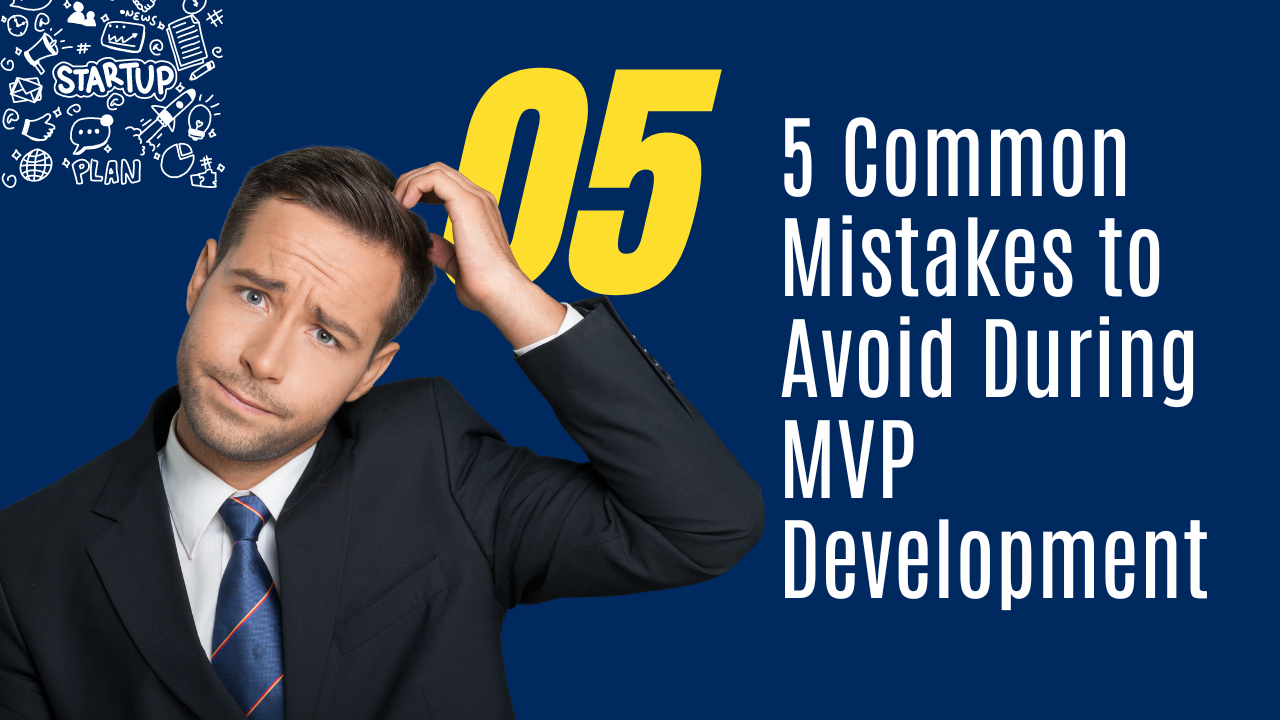Developing a Minimum Viable Product (MVP) is a crucial step for startups to validate their ideas, gather user feedback, and iterate towards a successful product. However, the MVP development process can be fraught with challenges, and even small mistakes can significantly impact your startup's trajectory. Here are 5 common pitfalls to avoid during MVP development:
1. Overloading Your MVP with Features:
One of the biggest mistakes startups make is trying to cram too many features into their MVP. Remember, the goal of an MVP is to test a core concept and gather user feedback, not to build a full-fledged product. Overloading your MVP can lead to:
Development delays and increased costs: Building unnecessary features consumes time and resources that could be better spent on core functionalities.
Distracted users and unclear value proposition: Too many features can overwhelm users and make it difficult to identify the core value of your product.
Difficulties in gathering feedback: With numerous features, it becomes challenging to isolate which aspects resonate with users and require improvement.
Focus on essential features that address your target audience's pain points and deliver core value.
2. Neglecting User Feedback:
The primary purpose of an MVP is to gather user feedback and use it to guide further development. Neglecting or undervaluing user feedback can lead to:
Building a product that doesn't meet market needs: Without understanding user preferences and pain points, your product might miss the mark.
Wasted development efforts: Investing time and resources in features that users don't value can hinder your progress.
Loss of potential early adopters: Ignoring user feedback can alienate potential customers and hinder adoption.
Actively seek user feedback through surveys, interviews, and usability testing to ensure your product development aligns with user expectations.
3. Focusing on Perfection over Progress:
Striving for perfection in your MVP can be counterproductive. Remember, an MVP is not a finished product; it's a starting point for learning and iteration. Spending excessive time on perfecting details can lead to:
Delayed launch and missed opportunities: The market waits for no one, and delaying your launch can give competitors an advantage.
Increased development costs: Perfectionism often comes at a cost, both in terms of time and resources.
Missed learning opportunities: Launching your MVP allows you to gather valuable feedback and iterate based on real-world usage.
Prioritize progress over perfection and focus on getting your MVP into the hands of users as quickly as possible to start learning and adapting.
4. Underestimating the Importance of Design:
While an MVP doesn't need to be visually stunning, neglecting user experience (UX) and user interface (UI) design can hinder user adoption and feedback. A poorly designed MVP can lead to:
Frustrated users and negative feedback: Difficult navigation, confusing interfaces, and poor usability can lead to a negative user experience.
Misinterpretation of user feedback: If users struggle to use your MVP, their feedback might not accurately reflect the core value of your product.
Invest in creating a user-friendly and intuitive design that allows users to easily understand and interact with your MVP.
5. Building in Isolation:
Developing your MVP in isolation, without input from potential users, advisors, or industry experts, can limit your perspective and hinder your progress. Collaboration and feedback are essential for:
Identifying blind spots: External perspectives can help you identify potential flaws or areas for improvement that you might have overlooked.
Gaining valuable insights: Experienced advisors or industry experts can provide valuable guidance and support.
Building a strong network: Connecting with others in the startup ecosystem can lead to potential partnerships, collaborations, and funding opportunities.
Seek feedback from mentors, advisors, and potential users throughout the MVP development process to ensure you're on the right track.
By avoiding these common pitfalls, startups can develop MVPs that effectively validate their ideas, gather valuable user feedback, and set the stage for building successful products.
